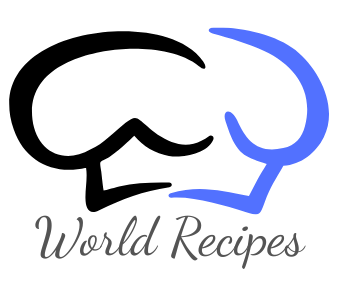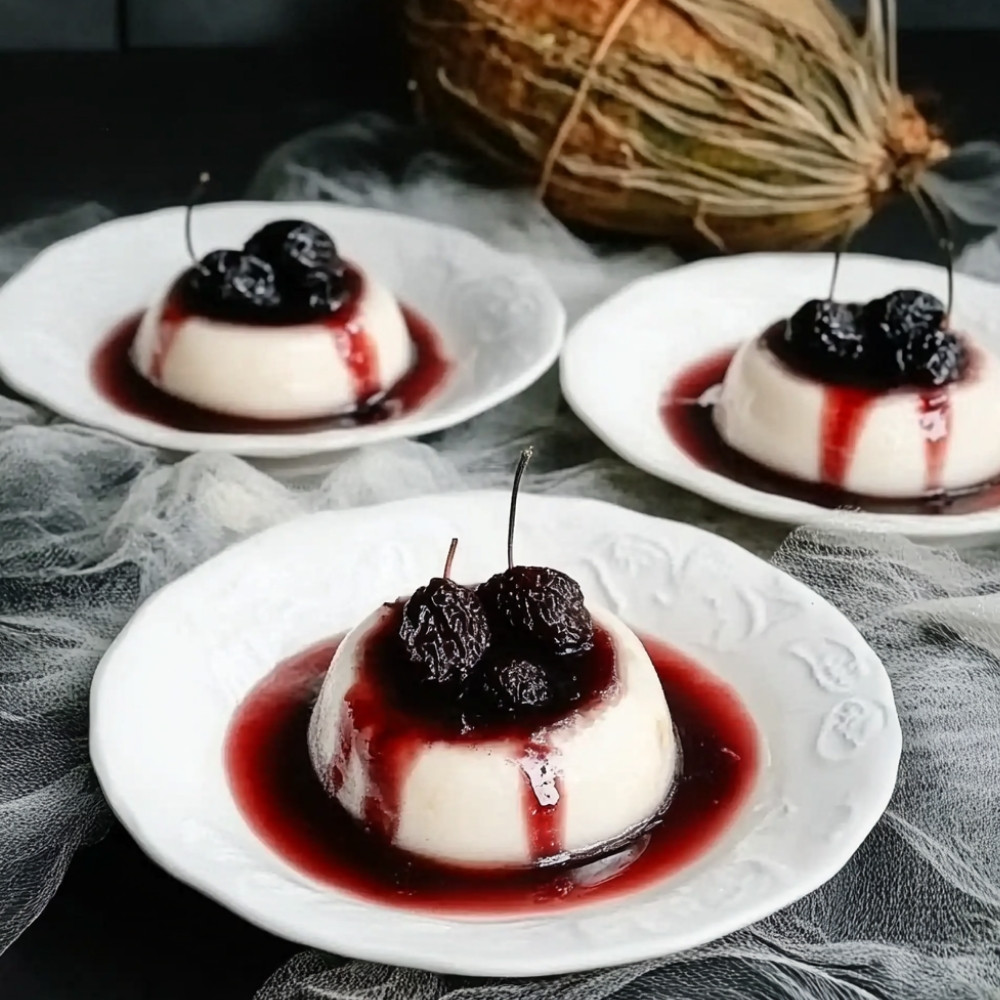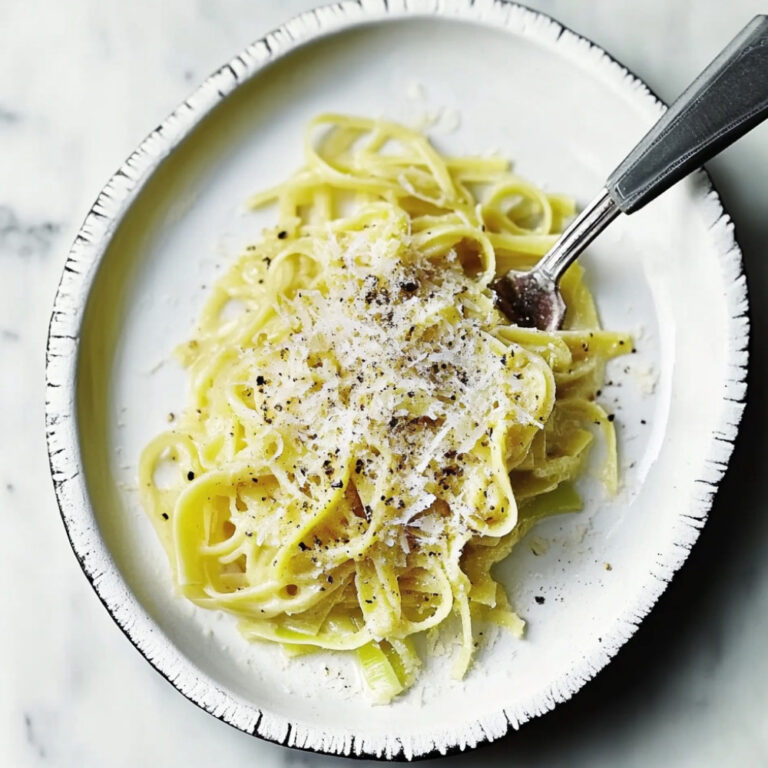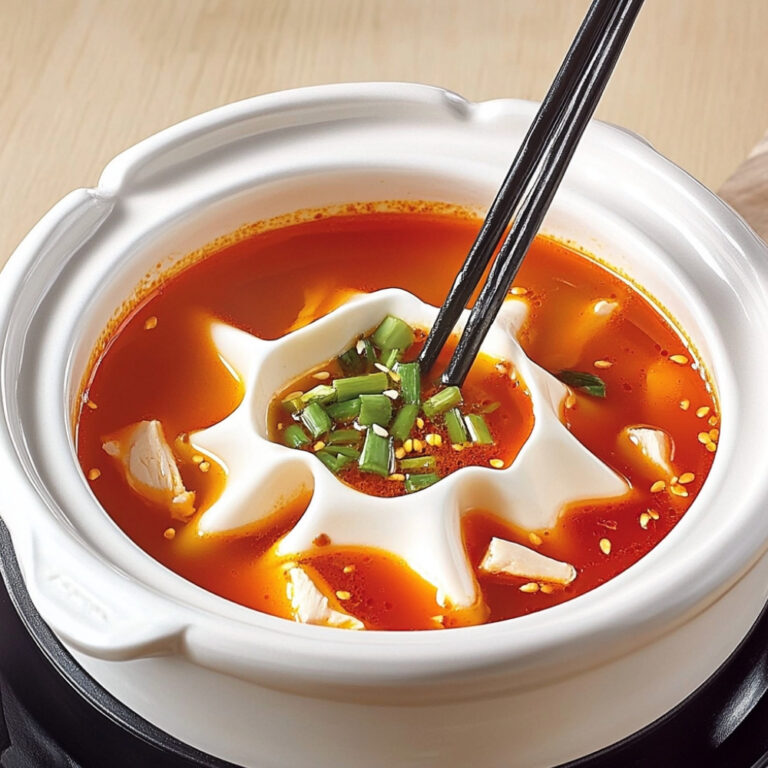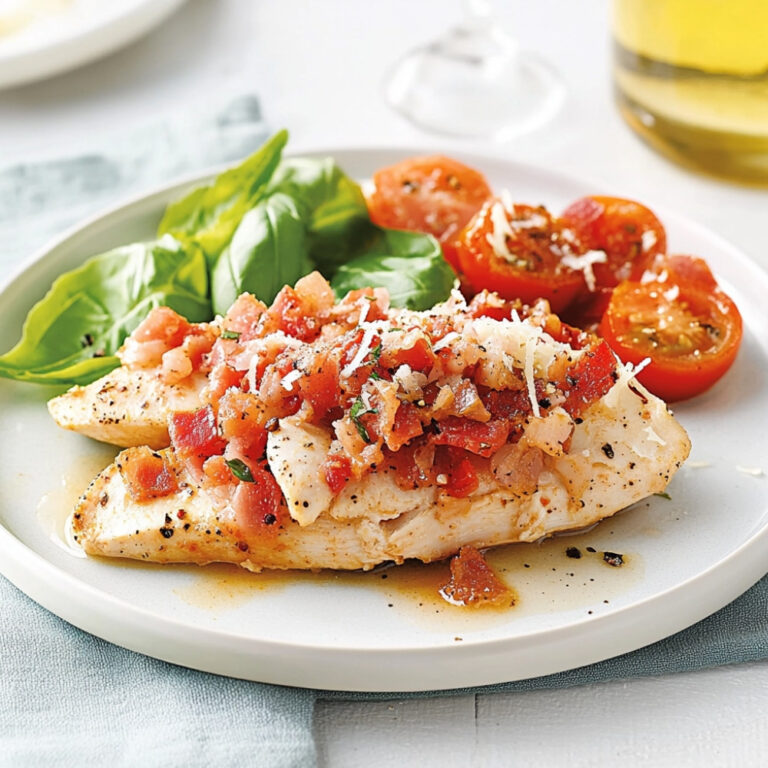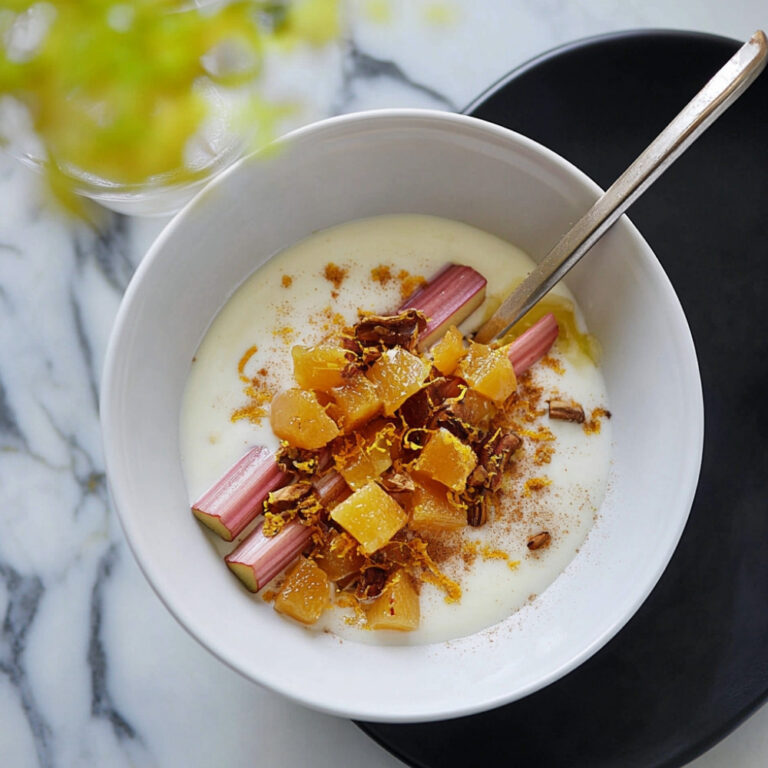Prune Panna Cotta
The first time I tasted this Prune Panna Cotta – or, more tenderly, pannacotta aux pruneaux – it was a quiet evening in late September, breeze slipping gently through the kitchen door, and the faint scent of warm vanilla and stewed fruit settling into the air like it belonged. There’s something softly nostalgic about it – that rich, earthy sweetness of the prunes folded into silken cream, barely holding together, just a gentle wobble on the plate. Not fussy. Not loud. Just subtle and deep and settled… like the kind of dessert you want to linger with, fork in hand, long after the coffee’s gone cold.
Why You’ll Crave It
- That quiet richness – creamy, but not cloying, thanks to the softly tangy depth of slow-simmered prunes
- Elegant enough for guests, but secretly so simple, it’s mostly waiting and stirring
- The hint of vanilla from the pod is gentle but grounded – it wraps around the fruit like a whisper
- It sets beautifully in little glass ramekins or vintage teacups (which I’ve done, accidentally and on purpose)
- Not too sweet – just sweet enough to satisfy without pushing you over
The first time I made this, I didn’t actually tell anyone what was in it… They had no idea it was prunes until after the plates were practically licked clean.
What You’ll Need
- 500ml liquid cream: whole, heavy cream works best here – rich and smooth, not too thin
- 75g sugar: plain white sugar, just enough to bring everything together without overshadowing the prunes
- 3 sheets gelatin: softened in cold water before adding – they give just the right set, like firm silk
- 150g prunes: pitted, please – we’re making dessert, not jam – and as soft and sticky as you can find
- 200ml water: enough to plump the prunes into submission before pureeing them smooth
- 1 vanilla pod: split and scraped – all that gorgeous, inky fragrance in every spoonful
Easy How-To
Simmer the prunes
First, get the prunes in a small saucepan with that water. Cover them and bring gently to a boil – then drop the heat and let them simmer slowly for about 15 minutes. You’ll know they’re ready when they sigh into softness at the touch of a spoon.
Blend into a smooth purée
Once they’ve softened, carefully blend the prunes into a thick, glossy purée. I like to keep it just slightly textured – not gritty, just not too baby-food smooth. Add a splash of that soaking water if needed to help it along.
Infuse the cream
Now comes the dreamy part. In another saucepan, warm the cream with the sugar and the scraped vanilla pod – both seeds and pod. Stir gently until the sugar disappears completely, and that warm, sweet smell makes your kitchen feel like a hug.
Dissolve the gelatin
While your cream’s warming, soak the gelatin in a bowl of cold water – just 5 minutes or so, until they’re soft and pliable. Squeeze out any excess water and stir them right into the warm cream. Off the heat now, so nothing curdles or scorches. Keep stirring slowly until the gelatin has melted away like it was never there.
Combine cream with the prune purée
Now gently, pour the prune mixture into the cream – just little by little, stirring as you go, until everything’s creamy and dusty plum-colored and smooth as satin.
Fill the molds
Take whatever dishes you like – ramekins, cups, tiny glass jars – and pour the mixture in slowly. You can strain it if you want perfectly elegant panna cotta, but I honestly prefer it as-is. A little rustic, a little personal.
Let it chill and set
Refrigerate them for at least 4 hours, but overnight is even better. They’ll firm up enough to unmold, but if you’re serving right in the ramekin, you don’t have to worry.
To unmold (if you like)
Dip the bottom of the mold briefly in warm water, then run a knife gently around the edge. Invert onto a plate and give it a gentle shake – if it resists, that means it still needs more chill time. Be patient.
Good to Know
- I’ve forgotten the vanilla once – somehow, it wasn’t a catastrophe… but next time, I made sure to double the pod
- If you’re using store-bought pitted prunes, give them a quick rinse first – sometimes there’s syrupy residue that can mess up the flavor
- They’re even better the next day. Something magical happens overnight in the fridge – richer, deeper, rounder
Serving Ideas
- Drizzle with a ribbon of honey and top with crushed walnuts – adds crunch and warmth, both
- Serve alongside a little glass of dessert wine, or a tiny black coffee, for contrast
- If unmolding, plate with a smear of leftover prune purée or a few slices of pear – soft, buttery ones
Top Tricks
- Don’t rush the chill. Even if it looks set on top, the center might still be soft. Give it time – it’s worth waiting.
- Warm your cream gently – if it boils, you’ll lose the silkiness
- If using powdered gelatin instead of sheets, 1 sheet equals about 2g, so adjust accordingly
Frequently Asked Questions
Can I use dried prunes straight from the package?
Yes, but simmering them in water first is non-negotiable – it softens them and deepens their flavor into something richer, almost like fig jam.
What if I don’t have gelatin sheets?
You can use powdered gelatin – just measure carefully. Use about 6g in total for this recipe and bloom it as you would: sprinkle over cold water, let it absorb, then dissolve in the warm cream.
Can I make it dairy-free?
You can, with full-fat coconut milk or a creamy oat milk – but expect a slightly different set and flavor. Lovely in its own way, just not the same.
How long will it keep in the fridge?
About 3 days, tightly wrapped. The texture holds beautifully, and the flavor actually mellows into something even smoother over time.
Conclusion
Pannacotta aux pruneaux isn’t loud or showy. It’s one of those desserts that feels quietly special – like something from another time, something a bit mysterious and deeply comforting. It’s become one of my go-tos when I want a dessert that says “I thought about this.” Rich, soft, barely sweet, deeply satisfying. I hope you’ll try it soon – and maybe keep it in your back pocket too, for the kind of nights that call for something gentle and a little elegant.
More recipes suggestions and combination
Chocolate panna cotta
Swap part of the cream with melted dark chocolate and serve with shaved chocolate on top for something more decadent.
Citrus panna cotta
Zest a lemon or blood orange into the cream base before heating for a bright, zippy variation. Pairs wonderfully with the prune suggestion, too, actually.
Panna cotta with berry coulis
Top your chilled panna cotta with a spoonful of raspberry or blackcurrant compote for contrast, color and a slight tartness.
Vanilla and honey panna cotta
Replace some sugar with a mellow, floral honey – it softens the whole dessert into something impossibly smooth.
Spiced panna cotta
Warm cinnamon sticks or a pinch of cardamom in the cream before straining. It’s so subtle, but it opens up the dessert in a surprising way.
